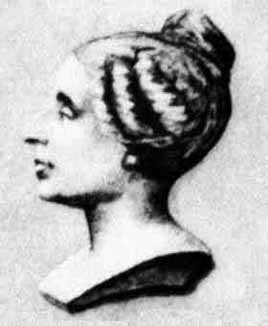French mathematician and physicist Sophie Germain made history on January 8, 1816, by becoming the first woman to win a prize from the prestigious Paris Academy of Sciences. Her groundbreaking work on elasticity theory not only earned her recognition but also played a significant role in the construction of iconic structures such as the Eiffel Tower. This achievement is particularly remarkable considering the barriers women faced in the scientific community during that time.
Sophie Germain was born on April 1, 1776, in Paris, France. Despite her passion for mathematics, her gender prevented her from pursuing formal education in the subject. However, this did not deter Germain from pursuing her intellectual interests.
During the French Revolution, Germain found solace in the library of her family’s home. It was there that she discovered a fascination for mathematics and began studying independently. In her pursuit of knowledge, she often faced resistance from her family, who believed that her interests were inappropriate for a woman.
Germain’s determination and talent eventually caught the attention of renowned mathematician Joseph-Louis Lagrange. He became her mentor and encouraged her to continue her studies. Despite her lack of formal education, Germain was able to access Lagrange’s lectures and notes, which provided her with a solid foundation in mathematics.
One of Germain’s most significant contributions to mathematics was her work on elasticity theory. This branch of physics deals with the behavior of solids when subjected to external forces. Germain’s research focused on the mathematical modeling of elastic materials, providing insights into their properties and behavior.
Her work on elasticity theory gained recognition when she participated in a competition organized by the Paris Academy of Sciences in 1816. The competition aimed to find a mathematical explanation for the vibrations observed in metal plates. Germain’s submission not only provided a comprehensive solution but also introduced new concepts that revolutionized the field.
Despite her exceptional work, Germain faced prejudice and discrimination due to her gender. To participate in the competition, she had to submit her work under a male pseudonym, as it was believed that her gender would undermine the credibility of her research. However, her brilliance could not be hidden, and her submission impressed the judges, leading to her historic win.
Germain’s research on elasticity theory had a lasting impact on engineering and construction. Her insights into the behavior of materials under stress were instrumental in the design and construction of structures like the Eiffel Tower, which relied heavily on the principles of elasticity.
Germain’s achievement opened doors for future generations of women in science and mathematics. Her determination to overcome societal barriers and pursue her passion serves as an inspiration to aspiring female scientists and mathematicians worldwide.
Although her contributions to the field of mathematics were groundbreaking, Germain’s work was not widely recognized during her lifetime. It was only after her death in 1831 that her achievements gained the recognition they deserved. Today, Sophie Germain is remembered as a pioneer in the field of mathematics and a trailblazer for women in science.
References:

